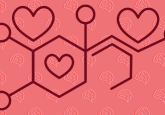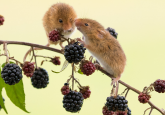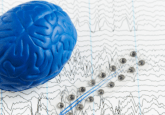Learning? Moving? Motivation? Dopamine does it all

Researchers unravel the diverse functions of dopamine by using a virtual-reality system.
Dopamine has its eggs in several baskets, contributing to brain functions such as learning, motivation and movement. A team from The Rockefeller University (NY, USA), have utilized a virtual-reality system involving fruit flies to untangle the roles of dopamine in the brain. They discovered that the same dopamine neurons linked to long-term learning also played a role in motivating the flies to keep searching for food-related smells.
Flies love a good whiff. In a fly’s brain, the center for olfactory learning – called the mushroom body – is responsible for teaching them which smells are linked to tasty sugar rewards. In the mushroom body, dopamine producing neurons work together with Kenyon neurons, which respond to odor, and output neurons, which send signals to the rest of the brain.
When a fly encounters an odor and then receives a sugar reward, the connections between these three neurons are enhanced by a burst of dopamine. This burst helps the fly to alter its future response to the odor and thus make new associations.
However, Vanessa Ruta and her team noticed that the same dopamine neurons linked to learning associations also fired as the animal moved, even in the absence of rewards.
 Painful behavior: affective pain hurts your motivation
Painful behavior: affective pain hurts your motivation
Washington University in St. Louis (MI, USA) researchers have uncovered the neuronal circuitry in the brain of rodents that may play a role in mediating pain-induced anhedonia – a decrease in motivation to perform reward-driven behaviors.
“That raised the question, are these neurons representing specific aspects of the movement, like how the animal is moving its legs, or are they related to something else, like the goal of the animal?” Ruta explained.
To examine this further, the team devised a virtual-reality system which allowed them to study the fly’s brain activity under different conditions. In the system, the fly explores an olfactory environment by walking on a ball, like a treadmill. A small tube delivers a stream of odor-filled air and a microscope over their head monitors brain activity. When the fly smells an attractive odor, it starts moving towards the source.
The researchers observed that the activity of the dopamine neurons was associated with movements in real time, but only when the flies were searching purposefully, as opposed to wandering about.
When flies were starving and interested in food, suppressing the dopamine neurons caused the flies to stop actively searching for the odor. In contrast, when flies who were fully fed had their dopamine neurons activated, they began to hunt down the odor.
These findings reveal that a single dopamine pathway can both shape future behavior through learning and provide motivation for ongoing beneficial behaviors. “It gives us a deeper understanding of how a single pathway can generate different forms of flexible behavior,” concludes Ruta.
Next, the researchers want to discover how the other neurons understand what a burst of dopamine means at a given point in time. The team believe that learning is a more continuous process than previously thought – that animals evaluate their behavior along the way to finally learning an association.





